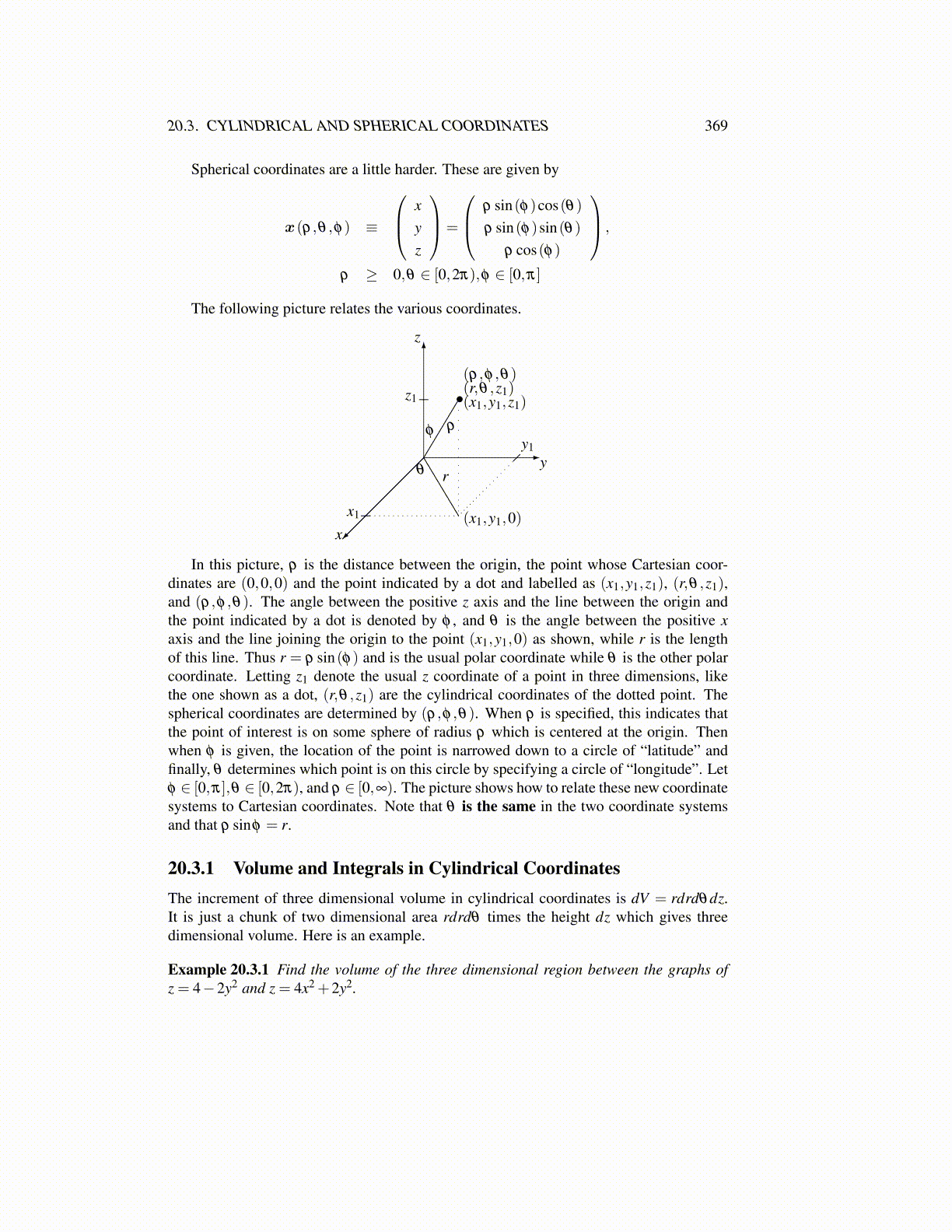
20.3. CYLINDRICAL AND SPHERICAL COORDINATES 369
Spherical coordinates are a little harder. These are given by
x(ρ,θ ,φ) ≡
xyz
=
ρ sin(φ)cos(θ)ρ sin(φ)sin(θ)
ρ cos(φ)
,
ρ ≥ 0,θ ∈ [0,2π),φ ∈ [0,π]
The following picture relates the various coordinates.
x1 (x1,y1,0)
y1
(ρ,φ ,θ)(r,θ ,z1)(x1,y1,z1)
z1
ρ
rθ
φ
•
x
y
z
In this picture, ρ is the distance between the origin, the point whose Cartesian coor-dinates are (0,0,0) and the point indicated by a dot and labelled as (x1,y1,z1), (r,θ ,z1),and (ρ,φ ,θ). The angle between the positive z axis and the line between the origin andthe point indicated by a dot is denoted by φ , and θ is the angle between the positive xaxis and the line joining the origin to the point (x1,y1,0) as shown, while r is the lengthof this line. Thus r = ρ sin(φ) and is the usual polar coordinate while θ is the other polarcoordinate. Letting z1 denote the usual z coordinate of a point in three dimensions, likethe one shown as a dot, (r,θ ,z1) are the cylindrical coordinates of the dotted point. Thespherical coordinates are determined by (ρ,φ ,θ). When ρ is specified, this indicates thatthe point of interest is on some sphere of radius ρ which is centered at the origin. Thenwhen φ is given, the location of the point is narrowed down to a circle of “latitude” andfinally, θ determines which point is on this circle by specifying a circle of “longitude”. Letφ ∈ [0,π],θ ∈ [0,2π), and ρ ∈ [0,∞). The picture shows how to relate these new coordinatesystems to Cartesian coordinates. Note that θ is the same in the two coordinate systemsand that ρ sinφ = r.
20.3.1 Volume and Integrals in Cylindrical CoordinatesThe increment of three dimensional volume in cylindrical coordinates is dV = rdrdθdz.It is just a chunk of two dimensional area rdrdθ times the height dz which gives threedimensional volume. Here is an example.
Example 20.3.1 Find the volume of the three dimensional region between the graphs ofz = 4−2y2 and z = 4x2 +2y2.